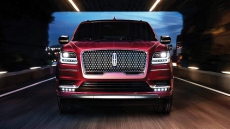It’s an exciting time to be in the market for an electric vehicle. There are more EV options than ever before, and your selection isn’t just limited to compact urban runabouts. The 2023 Hyundai Ioniq 5 and Ford Mustang Mach-E are two such electric SUVs that deliver plenty of range, comfort and utility without sacrificing the driving experience. The vehicle experts at Edmunds take a closer look at these two top-rated SUVs to see which is the better buy.
PERFORMANCE: An all-electric SUV was the last thing we would have expected to wear the galloping horse badge, but the Ford Mustang Mach-E definitely lives up to the Mustang name. Available with a single electric motor for rear-wheel drive or dual motors for all-wheel drive, the Mach-E starts with 266 horsepower and can be turned all the way up to 480 horsepower with the hard-charging GT Performance trim. Whichever Mach-E variant you choose, you’ll get an electric car that’s eager to accelerate and feels nimble and engaging for an SUV.
The Ioniq 5 isn’t far behind. The base Ioniq 5 starts off with a single motor and rear-wheel drive for 168 horsepower and tops out with 320 horsepower with dual motors and all-wheel drive. There’s no performance version yet but we expect one to debut for the 2024 model year and have more than 500 horsepower. In Edmunds’ testing, a dual-motor Ioniq 5 was a bit quicker than a comparable Mach-E, getting to 60 mph in 4.7 seconds compared to 5.2 seconds for the Mach-E.
Winner: Ioniq 5
RANGE AND CHARGING: Both SUVs have starting ranges in the low to mid 200s. With its extended-range battery and rear-wheel drive, the Mustang Mach-E is EPA-estimated to go 310 miles on a single charge. An Ioniq 5 equipped with Hyundai’s long-range battery and rear-wheel drive is estimated to go 303 miles on a full charge. Edmunds has tested both SUVs in its real-world range test. The Mach-E had the edge for going the distance on a single charge, but the Ioniq 5 can potentially be charged more quickly at certain high-powered DC fast-charging stations.
Winner: tie
INTERIOR AND TECHNOLOGY: If you’re getting an EV for your commute, odds are you’ll be spending a good amount of time inside. Fortunately, both the Mach-E and Ioniq 5 feature comfortable and attractive interiors with plenty of useful features. Contrary to what its exterior design might lead you to believe, the Ioniq 5’s cabin is surprisingly conventional-looking. Its wide 12.3-inch touchscreen melds seamlessly with the digital gauge panel and is easy to use with quick-responding controls.
The Mach-E goes a different route with an even bigger screen, 15.5 inches, that is tacked onto the center stack like a permanently affixed tablet. There’s a physical control knob, which is a nice touch, and the screen itself is pretty responsive and easy to navigate. There’s also wireless connectivity for Apple CarPlay and Android Auto, as opposed to a wired connection in the Ioniq 5, and Ford’s available hands-free highway driving assist system called Blue Cruise.
The Ioniq 5’s cabin is spacious and easy to get in and out of thanks in part to its low ride height. With a cargo capacity of 27.2 cubic feet, the Ioniq 5’s trunk isn’t small, but it lags behind the Mach-E’s 34.4 cubic feet, in spite of that car’s cargo-limiting sloped roofline. The Hyundai’s front truck is also comically small, whereas the Mach-E’s is large enough to squeeze in an overnight bag or small carry-on.
Winner: Mustang Mach-E
PRICING AND VALUE: The Hyundai Ioniq 5 starts at $42,785, which undercuts the Mach-E’s starting price of $47,495. Broadly, Hyundai provides a few more features when you cross-shop comparably priced models. The Ioniq 5 is also backed by a longer warranty. But there is one possible advantage to going with the Mach-E: an available federal tax credit. Unlike the Ioniq 5, it qualifies for a credit of at least $3,500, and potentially twice that if a certain percentage of its battery components are domestically sourced. The legislation influencing the second part of the credit is still being worked out at the time of writing.
Winner: tie
EDMUNDS SAYS: The Ioniq 5 and Mustang Mach-E are both ideal electric SUVs. The Ioniq 5 is a little bit more comfortable and has superior fast-charging capability, while the Ford counters with its more helpful technology and extra cargo space. Edmunds prefers the Ioniq 5 slightly more, but the Mach-E’s available tax credit could easily make it the better value for many buyers.

